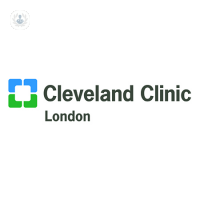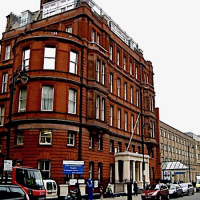Haemangioma
Dr Lea Solman - Paediatric dermatology
Created on: 03-14-2017
Updated on: 06-06-2023
Edited by: Jay Staniland
What is a haemangioma?
A haemangioma is a type of birthmark that is formed by a collection of blood vessels just under the skin. It is often referred to as a “strawberry mark” because of its reddish colour and texture.
Haemangiomas can be superficial or deep. A superficial haemangioma is simply a raised red area on the surface of the skin, whereas a deep haemangioma involves swollen blood vessels deeper in the skin which can make give it a bluish hue.
Haemangiomas can vary in size, and can develop anywhere on the body. They are very common, affecting around 5% of babies soon after birth.

Can haemangiomas disappear on their own?
Haemangiomas tend to increase in size rapidly for the first six months, but most will begin to shrink in size afterwards. They tend to disappear by the age of seven.
Because of this, treatment is not normally recommended for haemangiomas, but might be considered if the haemangioma is:
- Developing extremely rapidly.
- Growing near the eye and beginning to interfere with vision.
- Growing near the nose and causing breathing difficulties.
- Growing near the mouth and making it difficult to eat.
- Causing the surrounding skin to become deformed or stretched.
- Forming an ulcer.
In these situations it would be advisable to seek advice from a dermatologist.
What causes haemangiomas?
It’s not clear what causes haemangiomas, but they might be the result of placental tissue early in pregnancy. There doesn’t appear to be any genetic link – having another relative with a haemangioma doesn’t increase the chances of a child developing one.
How is a haemangioma treated?
- If the haemangioma has ulcerated, the doctor will likely recommend pain relief medication and offer advice on washing and dressing the area to keep it from being infected. If it has become infected, antibiotics might be necessary.
- If the haemangioma is near the eye, lips or nappy area, it can usually be treated with a medicine called propranolol, which should cause the birthmark to shrink. Sometimes steriods or vincristine are used as alternatives when propranolol doesn’t work.
- Laser treatment is usually recommended when the birthmark has stopped shrinking, or if it’s situated in the airway and causing breathing difficulties. It can also be an effective treatment for reducing the redness of the birthmark.
Finally, plastic surgery can be useful if the skin around the birthmark is stretched or deformed and you’d like to improve its appearance.
Which type of specialist treats haemangioma?
There are a range of specialists who have the potential to be involved in haemangioma treatment, depending on where the birthmark is. Laser treatment can be carried out by a dermatologist, where as surgery to improve the skin is carried out by a plastic surgeon. If laser treatment involves working in the airways, treatment might involve a pulmonologist or thoracic surgeon. Finally, if the haemangioma is affecting the eye then it might require the attention of an ophthalmologist.





